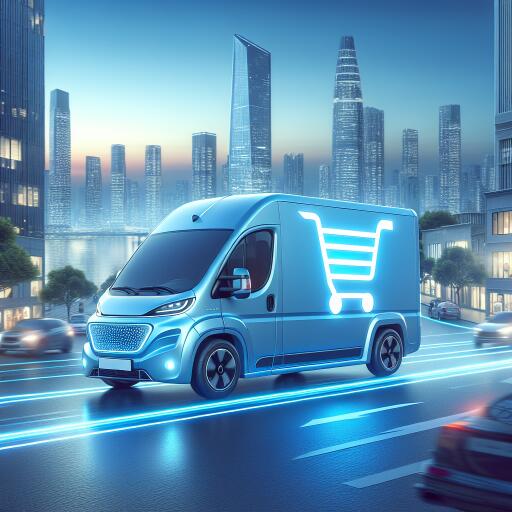In the bustling cities and suburbs of Michigan, the arrival of Amazon’s sleek, electric delivery vans, produced by Rivian, marks a significant milestone in the e-commerce giant’s ambitious goal to electrify its entire delivery fleet. This innovative collaboration between Amazon and the burgeoning electric vehicle maker Rivian Automotive Inc. not only pledges a greener future for delivery services but also injects vitality into the EV startup renowned for its head-turning designs and cutting-edge technology.
At the heart of this transformation is the Rivian electric delivery van, a vehicle that not only captivates onlookers with its futuristic aesthetics—characterized by its distinctive, LED-rimmed circular headlights and striking blue rear doors—but also impresses drivers with its seamless operation and advanced features. “My family thinks it’s really cool that I’m driving a Rivian truck,” says Kayla Dudley, a 24-year-old delivery driver from Pontiac, Michigan. Her enthusiasm reflects a growing trend among drivers who are now considering the switch to electric vehicles, inspired by their experiences behind the wheel of Rivian’s innovative creation.
Inside, the delivery van feels more like a mobile command center than a traditional utility vehicle. Equipped with twin digital tablet displays, including a massive 15.6-inch dash-mounted screen, the van allows drivers like Dudley to effortlessly sync their delivery routes via wireless technology, mirroring the convenience features found in many of today’s luxury cars. Moreover, the van’s spacious cargo bay and efficient layout facilitate the sorting and transportation of packages, underscoring Rivian’s attention to the practical needs of delivery services.
The foundation of Amazon’s electric fleet is set within a historical context, taking over spaces once occupied by landmarks such as the Pontiac Silverdome. Here, hundreds of Rivian vans gather, ready to distribute packages from Amazon’s colossal fulfillment centers. These facilities themselves are a testament to technological advancement, with thousands of robots working alongside human employees to ensure that orders are processed and delivered with unprecedented efficiency.
The transition to electric vans is part of a broader movement within the auto industry to explore sustainable transportation solutions. Fleets, in particular, offer a controlled environment in which the advantages of electric vehicles—such as reduced emissions, lower maintenance costs, and avoidance of idling penalties—can be fully leveraged. Rivian’s partnership with Amazon, facilitated by an exclusive 100,000-unit order, exemplifies how strategic collaborations can accelerate the adoption of EVs in sectors well-suited to their strengths.
Despite the challenges faced by EVs in other fleet applications, such as rental and ride-share services, delivery fleets like Amazon’s present a compelling use case. With pre-planned, routine routes that accommodate the electric vans’ range and charging requirements, Amazon aims to demonstrate the viability and benefits of a fully electrified delivery service. This initiative not only aligns with the company’s environmental commitments but also sets a precedent for other logistics companies considering a similar transition.
As Rivian vans become a common sight in neighborhoods across the Midwest and beyond, they symbolize more than just a change in how goods are delivered—they represent a step toward a more sustainable, technologically advanced future for transportation. With each delivery, drivers like Dudley are not only bringing packages to doorsteps but also showcasing the potential of electric vehicles to transform our roads, our communities, and our planet.
